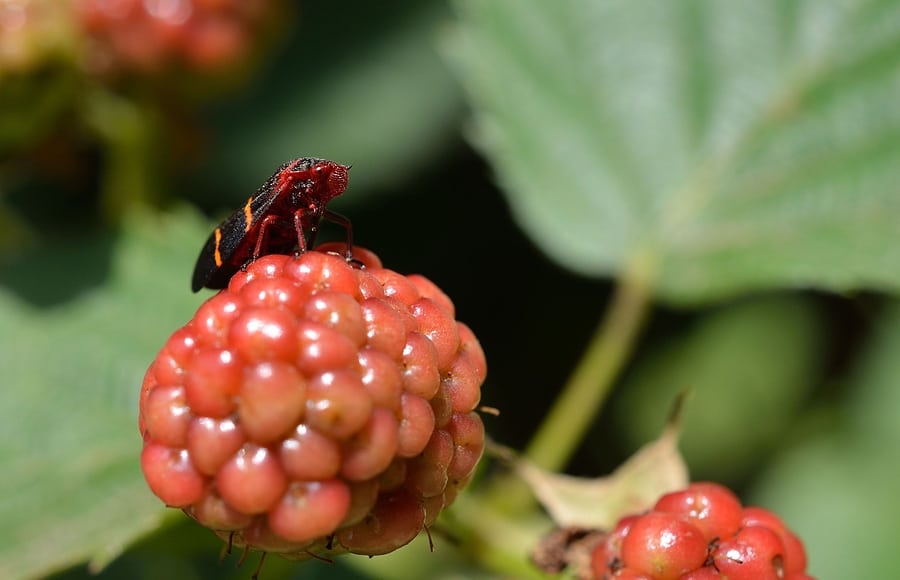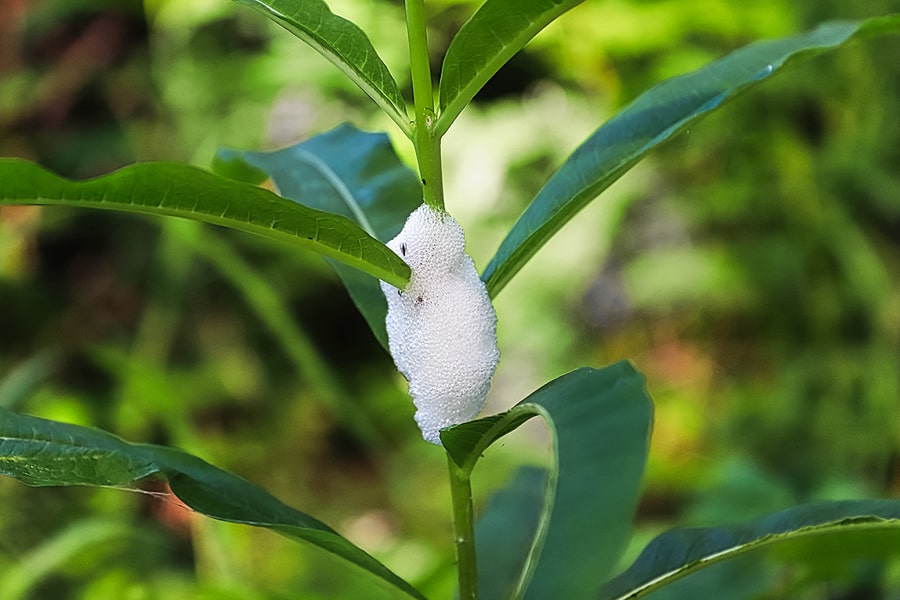If you live in Georgia or another southern state, you can count on the appearance of fire ant mounds in the year's late spring. To be such tiny little pests, ants can cause a lot of turmoil in home lawns, hayfields, and pastures. They are one of the most detested insects. Many people are stung […]

How often have you seen spittlebugs crawling around on your lawn? They look pretty harmless, but they can cause some severe damage to your yard. What should you do if you see them?
Spittlebugs are tiny insects that feed off plants. They secrete a sticky substance called Spittle that attracts ants and other pests. These pests are attracted to the Spittle and damage plants by eating the plant leaves, causing the plant to wilt and die.
Using a natural insecticide, you can prevent these bugs from damaging your lawn. There are several ways to get rid of them without resorting to chemicals.
What is the Two-Lined Spittlebug?
This bug doesn't attack grasses or plants. It attacks turfgrasses, and it does so by sucking the sap out of their leaves. The two-lined spittlebug feeds on the roots of many types of grass, including Bermuda grass, St. Augustine grass, Kentucky bluegrass, zoysia grass, fescue, bentgrass, and others. This pest is most active in spring and summer, and it's also attracted to light-colored mulch and soil.

Signs and Symptoms of Spittlebugs?
A sign is the visible part (or part) of the pest, while a symptom is the visible result (or results) of the pest acting on a plant.
Spittlebugs are tiny, brownish-black bugs that resemble a miniature version of the common housefly. They have long legs and antennae but no wings. The first sign usually appears as yellowish-brown spots on the underside of the leaf. As the plant dies, the leaf turns black and eventually falls off.
An example of a northern masked chafer in Kentucky bluegrass is when the leaves turn yellow in a random, but a sometimes patchy, pattern. The sign is actually the pest: the larvae of the beetle, which feeds on the roots of the grass plants. The sign and symptoms of the spittlebug are challenging to distinguish from one another.
The larvae of both species feed on the host plant's root system. The larva of the two-lined spittlebug eats the roots of grasses, whereas the larva of the masked chafer feeds on the roots of legumes.
To identify spittlebug problems, you must first determine whether they're present. If you notice any signs of damage, please take photos of them and contact your nearest lawn care company. They'll help you identify which kind of spittlebug is responsible for the problem and provide tips on controlling its population.
Lawn Damage and Control
The most common cause of lawn damage is a spittlebug infestation. These insects feed by sucking sap from plants, causing them to wilt and die. They can also transmit disease. If you see signs of spittlebug damage, it may be best to call a professional lawn pest control company to help you deal with the problem.
If you want to try to treat the problem yourself, several options are available. You can use an organic pesticide such as soap suds or dishwashing liquid. Or, you could apply a commercial insecticide like pyrethrin.
Another tip would be to keep your lawn cut and cleaned to prevent attracting two-lined spittlebugs. Avoiding overwatering or using less water can also help control these pests.
Natural Removal Method:
- A garden hose sprayed with water removes the spittlebug from the plant.
- A sprayer is used to apply a soap solution to the affected area.
- A hand brush is used to clean up the dead plant material.
- A plastic bag containing a recommended mixture of hot pepper oil and water is used to kill the spittlebug.
Removing with Pesticide:
- A garden hose sprayed with water removes the spittlebug from the plant.
- A sprayer is used to apply a soap solution to the affected area.
- A hand brush is used to clean up the dead plant material.
- Apply the Pyrethrin solution according to the directions from the manufacturer to kill the spittlebug.
Spittlebug control can be tricky, so if you are having trouble with this particular pest, it is best to contact a lawn pest control service provider for assistance. They will have the knowledge and experience needed to identify the problem and provide an effective solution.
Spittlebugs and Thatch Buildup
Eggs are laid in the grass in the thatch, or behind the leaf sheath.
Most masses occur on the soil surface or in the thatch. These masses are not usually visible.
Thatch layers that are excessive also favor the development of infestation.
The main areas for success with cultural control of two-lined spittlebugs lie with thatch and irrigation management.
Spittlebug Prevention
In addition to identifying and treating spittlebug problems, it is important to prevent their return. Here are some ways to do this:
• Keep your lawn mowed regularly. Mowing keeps weeds down, which helps reduce the presence of food sources for spittlebugs.
• Use a mulching mower rather than a conventional mower. Mulching mowers don't leave clippings; instead, they chop up vegetation into small pieces that quickly decompose. This reduces the amount of food available for spittlebugs. In addition, the mulch provides a protective layer over the soil surface.
• Remove weeds immediately after mowing. Weeds tend to attract spittlebugs because they create more hiding places for insects.
• Water your lawn carefully. Overwatering encourages the growth of weeds and other undesirable plants. It also attracts spittlebugs.
You should also make sure that you remove all debris around your home, including flower pots and trash cans. Spittlebugs often hide under these items.
Hopefully, now you understand how to identify spittlebugs and know their impact on your lawn. If you notice spittlebug lawn damage, contact Pride In Turf, your trusted lawn care professional, to assist you with the problem.
